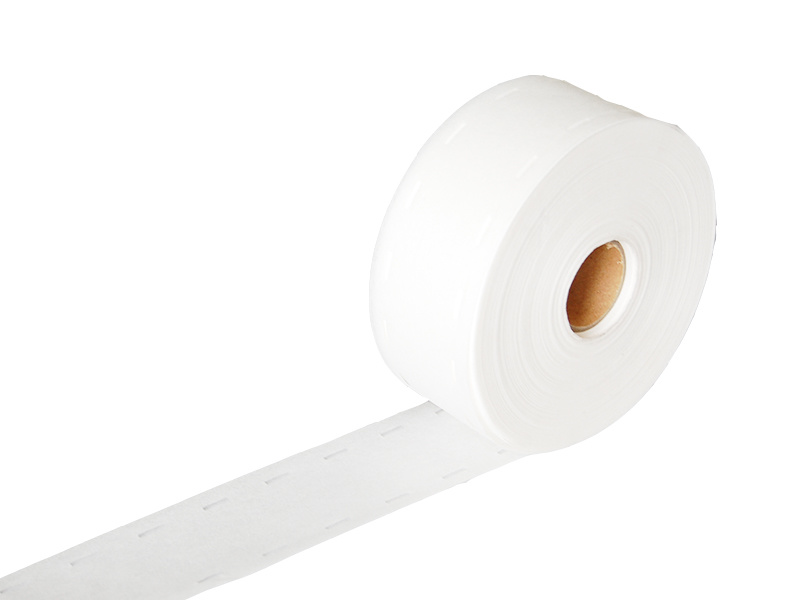Understanding Adhesive Interlining Nonwoven: A Key Component in Textile Innovation
Release time:
2025-06-18
Adhesive interlining nonwoven materials are increasingly becoming integral to the textile sector, especially in applications such as clothing, home textiles, and industrial fabrics. These materials, characterized by their unique bonding properties, provide significant advantages over traditional interlining options. They are primarily composed of nonwoven fibers that are held together through adhesive processes, resulting in a stable and versatile fabric that meets various functional requirements.
One of the primary benefits of adhesive interlining nonwoven is their ability to enhance the structural integrity of garments. By incorporating these materials into clothing, manufacturers can provide additional support and shape retention, which is particularly beneficial for tailored garments. This structural support not only improves the fit but also enhances the overall aesthetic appeal of the finished product.
In addition to structural benefits, adhesive interlining nonwoven is also valued for its lightweight and breathable characteristics. Unlike traditional interlinings, which may add bulk to garments, nonwoven options contribute to a more comfortable wearing experience without compromising on functionality. This lightweight nature makes them suitable for a wide range of applications, from formal wear to casual apparel.
Another significant aspect of adhesive interlining nonwoven is their versatility in the manufacturing process. They can be easily cut, shaped, and applied to various fabrics, allowing for seamless integration into a variety of textile products. This adaptability not only expedites the production process but also opens avenues for creative design and innovation in the fashion industry.
Furthermore, adhesive interlining nonwoven materials are often engineered to be resistant to shrinkage and distortion, ensuring that garments maintain their intended shape after multiple washes. This durability is a critical factor for consumers, leading to increased satisfaction and reduced returns for manufacturers.
Sustainability is also becoming a critical consideration for the textile industry, and many manufacturers are now focusing on producing eco-friendly adhesive interlining nonwoven materials. By utilizing recycled fibers and environmentally friendly adhesives, companies can minimize their ecological footprint while still delivering high-quality products.
In summary, adhesive interlining nonwoven materials are a vital component in modern textile manufacturing, offering numerous advantages such as structural support, lightweight comfort, versatility, and durability. As the industry continues to evolve, embracing these innovative materials can lead to enhanced product quality and increased consumer satisfaction. Understanding their properties and applications is essential for professionals seeking to stay ahead in the competitive textile market.
One of the primary benefits of adhesive interlining nonwoven is their ability to enhance the structural integrity of garments. By incorporating these materials into clothing, manufacturers can provide additional support and shape retention, which is particularly beneficial for tailored garments. This structural support not only improves the fit but also enhances the overall aesthetic appeal of the finished product.
In addition to structural benefits, adhesive interlining nonwoven is also valued for its lightweight and breathable characteristics. Unlike traditional interlinings, which may add bulk to garments, nonwoven options contribute to a more comfortable wearing experience without compromising on functionality. This lightweight nature makes them suitable for a wide range of applications, from formal wear to casual apparel.
Another significant aspect of adhesive interlining nonwoven is their versatility in the manufacturing process. They can be easily cut, shaped, and applied to various fabrics, allowing for seamless integration into a variety of textile products. This adaptability not only expedites the production process but also opens avenues for creative design and innovation in the fashion industry.
Furthermore, adhesive interlining nonwoven materials are often engineered to be resistant to shrinkage and distortion, ensuring that garments maintain their intended shape after multiple washes. This durability is a critical factor for consumers, leading to increased satisfaction and reduced returns for manufacturers.
Sustainability is also becoming a critical consideration for the textile industry, and many manufacturers are now focusing on producing eco-friendly adhesive interlining nonwoven materials. By utilizing recycled fibers and environmentally friendly adhesives, companies can minimize their ecological footprint while still delivering high-quality products.
In summary, adhesive interlining nonwoven materials are a vital component in modern textile manufacturing, offering numerous advantages such as structural support, lightweight comfort, versatility, and durability. As the industry continues to evolve, embracing these innovative materials can lead to enhanced product quality and increased consumer satisfaction. Understanding their properties and applications is essential for professionals seeking to stay ahead in the competitive textile market.
Adhesive Interlining Nonwoven
Previous Page
Previous Page
Latest News
Nantong Rainbow Technology Co., Ltd.
Telephone:+86-13587673537
E-mail:chrislc717@163.com
Address: Group 42, Xizansi Village, Xiting Town, Tongzhou District, Nantong City, Jiangsu Province

Copyright©2024 Nantong Rainbow Technology Co., Ltd. | Powered by www.300.cn
Copyright©2024 Nantong Rainbow Technology Co., Ltd.
Powered by www.300.cn



